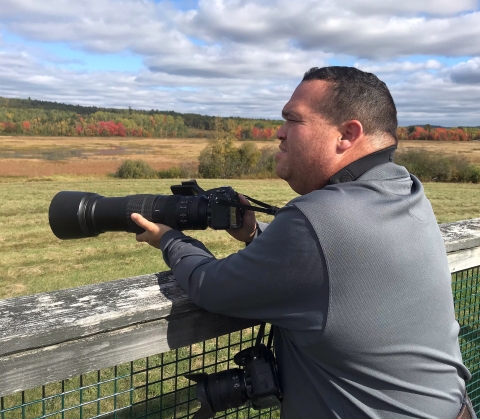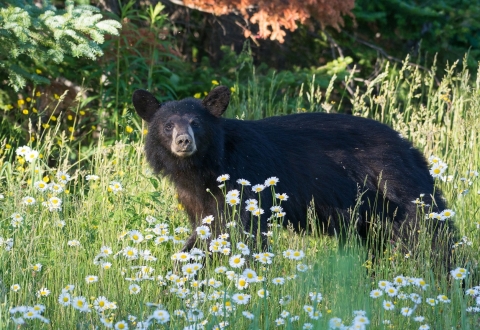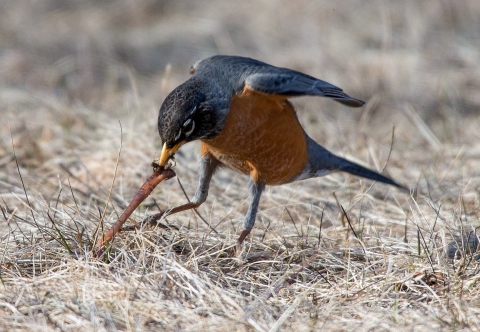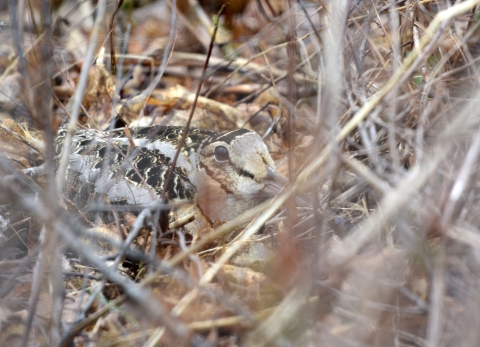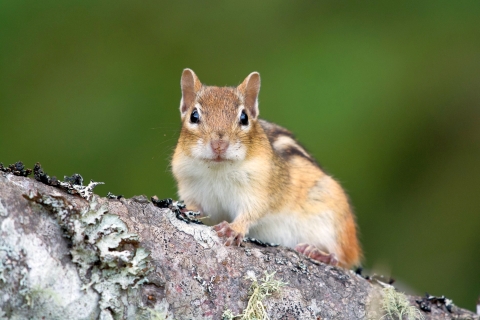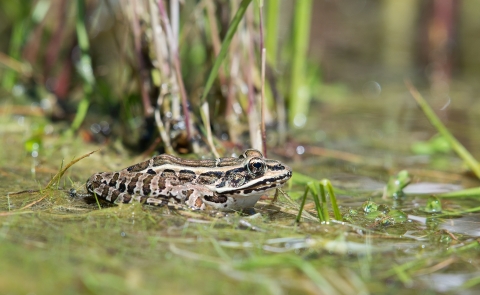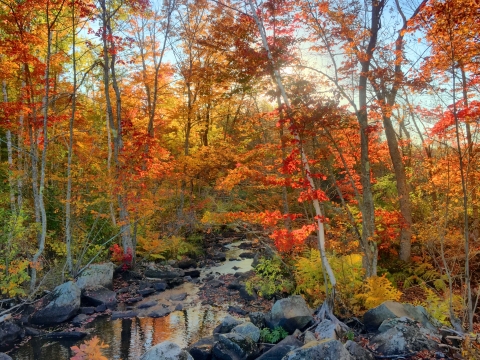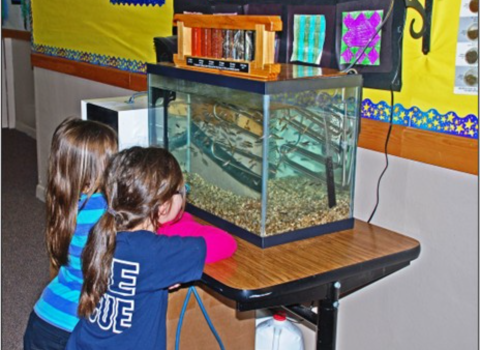Keith Ramos and a friend were out fishing on Bearce Lake at Maine’s Moosehorn National Wildlife Refuge one summer day.
“It was a peaceful moment with the sun about to set and loons calling in the distance,” says Ramos. “It was quiet, relaxing and special. I was trying to get a good silhouette of the kayak and the tree line, showing what the landscape looks like here. It was just a beautiful sunset that day. I’m not sure the photo (above) does it justice.”
Ramos, a native of Puerto Rico, has been manager at the Northern Maine National Wildlife Refuge Complex since August 2016. Before that, he worked in various positions at national wildlife refuges in North Carolina, Alaska, Florida, Texas and Arizona.
He makes a point of getting out on Moosehorn Refuge regularly with his camera.
His photos document and celebrate the wildlife, forest and wetlands at the refuge near the Canadian border in northeastern Maine.
Here are some of Ramos’s favorites from the refuge and a bit about how and why he took them.
“I watched that American black bear for about 20 minutes. He was digging and eating turtle eggs – snapping turtle and painted turtle eggs. You can see the mud on his face. When he walked into the patch of flowers, he suddenly looked at me, and I was able to snap the picture. I love the flowers, the contrast, the bugs in his face, and that muddy nose from him digging for eggs.”
“I watched 30 to 40 American robins eating worms near the refuge entrance on and off for three or four days before I could get this photo right. It was a tug of war between the bird and the worm. It’s amazing how robins run on the ground, and listen, and suddenly jump where there’s a worm. Those worms hold on for dear life, too.”
“We discovered this American woodcock as we were preparing to do a prescribed burn prescribed burn
A prescribed burn is the controlled use of fire to restore wildlife habitat, reduce wildfire risk, or achieve other habitat management goals. We have been using prescribed burn techniques to improve species habitat since the 1930s.
Learn more about prescribed burn . We marked the area so we wouldn’t burn over it. It was the first time I had seen an American woodcock camouflaged on a nest. It just sat still, hidden in the leaf litter and vegetation. With a long lens, I was able to get a picture from a safe distance without disturbing it.”
[Aside: This really cool video clip Ramos shot shows an American woodcock strutting its stuff.]
“I love chipmunks. I’ve always wanted to get a picture of one, but they’re so fast. This one on a dead log didn’t seem too worried, so I got down on my belly and snuck in, doing an Army crawl until I could get close enough. My administrative assistant was behind me thinking, ‘What are you doing?’ I was able to get on eye level with it. I just think chipmunks are such neat critters, and they get overlooked because they are so small. Most people look for the big critters – the moose and the bears. They just don’t stop for the little guys.”
“Pickerel frogs are fairly common here. But, not being from Maine, I had not seen one before. Again, I got down on my belly at the edge of the water. He or she was very patient with me, letting me get a few pictures. I love amphibians and other wildlife that people don’t typically stop to look at.”
“This was my first fall in Maine. We had been in drought, and people weren’t expecting good fall colors. But we had incredible colors on the refuge. They were just so bright and so vibrant. I love this spot, with the stream coming out of Vose Pond through the woods. I take a picture in that spot every time I go by it, year-round.”
“This was an Amphibian Walk Night one spring on the refuge. We had more than 100 people show up. We found tons of spotted salamanders and frogs, but Eastern newts are harder to find. We saw only a handful that night. I was trying to get a picture of one when my then-8-year-old son, Isaiah – with his headlamp on – was trying to get a look at it. He was crawling along with the newt. All the kids were so excited. That was extra special to me.”
More photoGRAPHY tips Visit a national wildlife refuge


